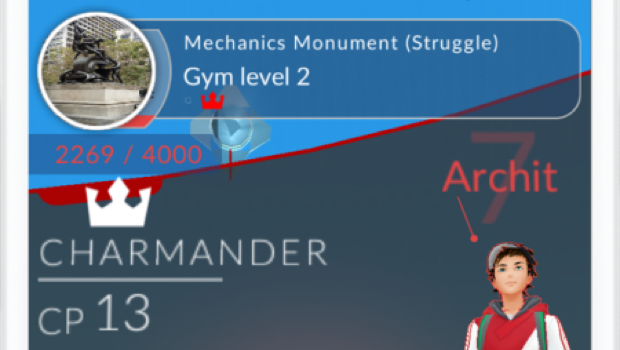
Whether it's your local church, an art installation, a public library, or just a big ol' water tower, Pokemon Go has chosen some… interesting locations for its Pokestops and gyms. They're not random, but they're also somewhat scattershot in their placement. One neighborhood could be bursting at the seams with Pokestops and gyms, while another could be a desolate wasteland. So what's the deal? It turns out, a lot of Pokemon Go's designs can be traced back to Google.
While Pokemon Go may be the first time many players have heard of developer Niantic Labs, it's a studio that traces its lineage back to Google (whose parent company is now known as "Alphabet"). Niantic was once part of Google, and its founder and CEO, John Hanke, worked on the technology that powers Google Maps. That tech was used in Niantic's previous game, Ingress. And Ingress, much like a Metapod becoming Butterfree, has evolved - in its own way - to become Pokemon Go.
Much like Pokemon Go, Ingress is a game of geolocation. Players must travel to specific locations to capture portals, which link with other captured sites to form zones controlled by whichever faction holds those points. Hanke and his team chose some of the first portals based on sites with historical or cultural significance, such as The Washington Monument, Big Ben, or longstanding museums.
Other locations were chosen based on geo-tagged photos from Google. For example, you might not have much interest in, or even know about, the world's largest ball of twine (located in Cawker City, Kansas by the way) but the fact that so many tourists take pictures of it and upload those pictures to Google would make it a prime candidate for an Ingress portal.
Many more portals were submitted as suggestions by Ingress players. Hanke recently told Mashable that there are approximately 15 million player-submitted portal locations, 5 million of which have been approved.

Ingress player data has revealed the most popular of these portal locations, and Niantic has turned those into gyms. The less popular (but still active and approved) locations have become Pokestops. "The Pokestops are submitted by users, so obviously they're based on places people go," Hanke said. "We had essentially two and a half years of people going to all the places where they thought they should be able to play Ingress, so it's some pretty remote places."
It can lead to some interesting situations where the landscape has changed over time. I can personally tell you of two stories, each revolving around water towers (look, I live in central Iowa, we don't have a lot of super cool landmarks, okay?).
Weekly digests, tales from the communities you love, and more
One nearby Pokestop is assigned to an old water tower that existed during Ingress' launch window, but was torn down by the time Pokemon Go was released. So down the street is a Pokestop pointing me to something that no longer exists.
Meanwhile in Des Moines, a gym is assigned to a water tower stationed outside a nearby mall. That makes sense - the mall is a popular area, and the water tower is an easy-to-see landmark - however, the water tower is surrounded by a tall chain-link fence with barbed wire around the top, and a big "NO TRESPASSING" warning on the gate. Because of this, it's not possible to get close enough to actually interact with the gym.
That is, unless you fool the app by closing it and re-opening it, hoping the GPS signal will think you're on the other side of the fence - a trick I definitely did not do, and do not suggest any central Iowa players reading this try. Unless you are Team Mystic, in which case: we cool.
So if you're wondering why Pokemon Go seems to be telling you to go to church, or the local art installation, odds are that it's actually following in the footsteps of a tourist whose picture is circulating on Google or an Ingress player who suggested it. Maybe they were distracting themselves from a lengthy sermon, maybe it was a good place to meet up with fellow players, or maybe the world has changed since those days, closing off what once was.
I say, make up your own stories for these places. And good luck catching 'em all.
Seen something newsworthy? Tell us!
Sam is a former News Editor here at GamesRadar. His expert words have appeared on many of the web's well-known gaming sites, including Joystiq, Penny Arcade, Destructoid, and G4 Media, among others. Sam has a serious soft spot for MOBAs, MMOs, and emo music. Forever a farm boy, forever a '90s kid.



